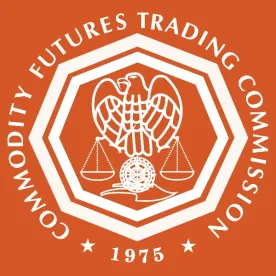Yesterday, the Commodity Futures Trading Commission proposed modifications and additions to its 2013 proposed regulations and guidance related to speculative position limits in order to potentially authorize relevant derivatives exchanges to recognize certain derivatives positions as constituting non-enumerated bona fide hedges or enumerated anticipatory hedges. The CFTC also proposed to grant derivatives exchanges authority to recognize certain spread positions as justifying an exemption from speculative position limits too.
These new powers would be available to designated contract markets and swap execution facilities that satisfy certain minimum requirements related to their listing of a relevant derivatives contract. All exemptions from position limits granted by exchanges would be subject to CFTC review.
In addition, the CFTC recommended temporarily delaying its previously proposed requirement that derivatives exchanges establish and monitor speculative position limits on swaps. The Commission made this proposal because, practically, derivatives’ exchanges do not necessarily have access to information to satisfy this obligation at this time.
In November 2013, the CFTC proposed new rules related to derivatives speculative position limits, addressing absolute levels for 28 so-called "core referenced futures contracts" involving various agricultural commodities, energy products and metals. These limits were proposed to apply on a futures equivalent basis across all referenced contracts (e.g., related futures, options and swaps). The proposed rules also addressed what constituted bona fide hedging positions and the aggregation of related accounts. The proposed rules were meant to replace final rules adopted by the CFTC in 2011 that were vacated by a US District Court during September 2012.
Subsequently, in September 2015, the CFTC revised its November 2013 proposal related to the aggregation of accounts to potentially authorize disaggregation of positions of independently controlled entities within a single corporate structure. (Click here for details of this revision in the article, “CFTC Revises Aggregation Proposal Related to Position Limits” in the September 27, 2015 edition of Bridging the Week.)
Yesterday’s modifications and amendments endeavored to address industry criticisms regarding the CFTC’s 2013 proposal’s placement of all authority to grant non-enumerated hedging exemptions exclusively with it and the elimination of spread position and certain anticipatory hedge exemptions from speculative position limits.
Under the Commission’s latest proposal, derivatives exchanges could submit to the CFTC rules for its approval that would permit them to recognize certain derivatives positions as valid hedges, even if not expressly enumerated as a valid hedging strategy by the CFTC in its own rules. These rule proposals could be submitted utilizing the CFTC’s self-certification process for expedited treatment. Exchanges could also submit rules that would permit them to grant exemptions to position limits for certain spread positions and to recognize certain enumerated anticipatory bona fide hedging positions.
Under its proposal, the CFTC would have the authority to revoke non-enumerated hedging exemptions after they were granted by an exchange. If revocation occurred, a market participant would be required to come into compliance with the requisite position limit “within a commercially reasonable amount of time.” This measure would be a function of the CFTC’s assessment of “current market conditions and the protection of price discovery in the market.”
For an exchange to process a non-enumerated hedging exemption, the relevant derivatives position must be in a commodity derivative contract actively traded on the exchange and the exchange must have at least one-year experience in setting position limits for the contract. Exchanges would be required to have similar experience to process spread and anticipatory hedge exemptions.
Applications for non-enumerated hedge exemptions would have to be submitted to exchanges in advance and be reapplied for at least annually. Exchanges would be required to publish on their websites at least quarterly a description of each new type of derivatives position that they recognized as a non-enumerated bona fide hedge. Both exchanges and applicants would be subject to record-keeping requirements. Among the records exchanges would be required to maintain would be oral and written communications between them and an applicant related to an application.
Market participants would still have the ability to seek a staff interpretive letter or obtain exemptive relief from the Commission as an alternative to participating in an exchange process.
As part of its new proposal, the CFTC also recommended modifications to certain previously proposed definitions, including the definition of “bona fide hedging position” in connection with physical commodity derivatives. The CFTC said it proposed amending its definition to more accurately reflect standards under the applicable statute.
In a statement regarding the CFTC’s proposed rule modifications and additions, Chairman Timothy Massad indicated that the Commission is aiming to complete a position limit rule by year-end. He said that the Commission is currently “working to review exchange estimates of deliverable supply so that spot month limits may be set on current data.”
Separately, Commission J. Christopher Giancarlo voiced his approval of the Commission’s new proposals. He stated “the supplemental proposal leverages exchange expertise and resources to enable exemptions to be granted in an efficient and timely manner without sacrificing market integrity. The Commission would remain the ultimate arbiter of exemptions from position limits by retaining the authority to review and reverse any exchange-granted exemption.”
The CFTC will accept comments on its proposed modifications and amendments for 30 days following their publication in the Federal Register. In addition to seeking general comments, the CFTC solicited input on 68 specific matters.




 />i
/>i
